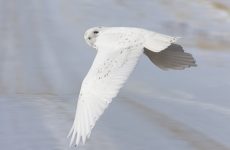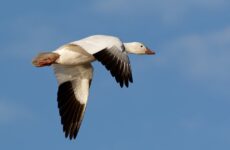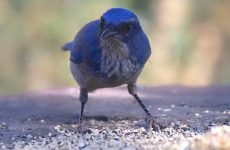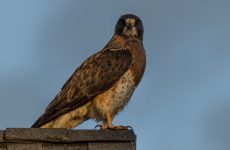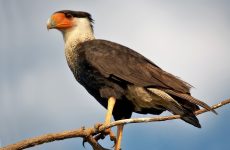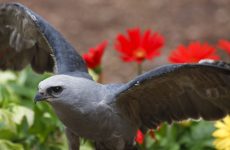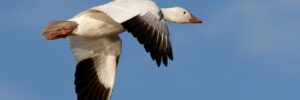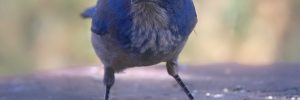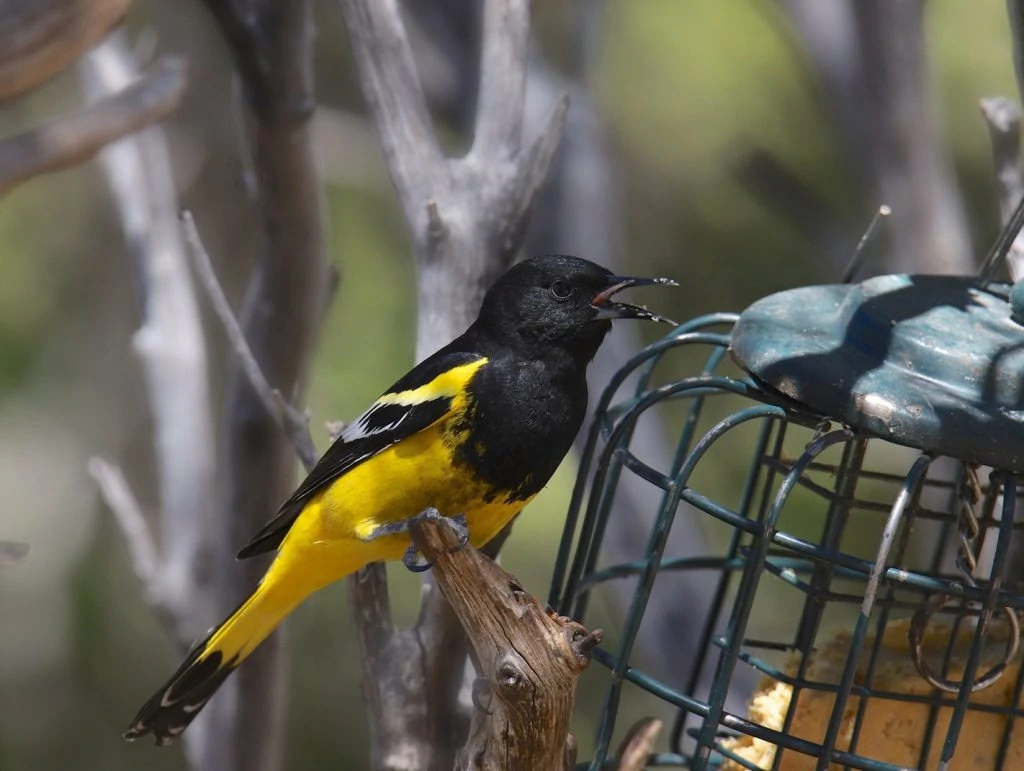
Yellow birds are common in Nevada in spring and summer when the warblers arrive, but in winter, only the Yellow-rumped Warbler and Lesser Goldfinch are commonly spotted yellow birds here.
This guide will help you identify yellow birds in Nevada that you have spotted by giving you pictures, identification information, song recordings, and when they migrate in and out.
Most yellow birds in Nevada are warblers, orioles, or tanagers, and sometimes they are female birds that look very different from the male of their species.
Identifying yellow birds will be a lot easier with all the information in this guide. I have listed these yellow birds in the order of which are most commonly spotted in Nevada according to ebird checklists in spring and summer (May and June).
Yellow birds in Nevada all year: Yellow-rumped Warbler, Lesser Goldfinch, Western Meadowlark, Orange-crowned Warbler, American Goldfinch, Cedar Waxwing
Yellow birds in Nevada in summer: Western Kingbird, Yellow Warbler, Yellow-headed Blackbird, Western Tanager, Common Yellowthroat, Wilson’s Warbler, Hooded Oriole, Nashville Warbler, Summer Tanager, Scott’s Oriole, Hooded Warbler
Yellow birds in Nevada during migration: Evening Grosbeak, American Redstart, Prothonotary Warbler
So read on to identify those yellow birds you have spotted.
20 Yellow Birds In Nevada:
1. Yellow-rumped Warbler
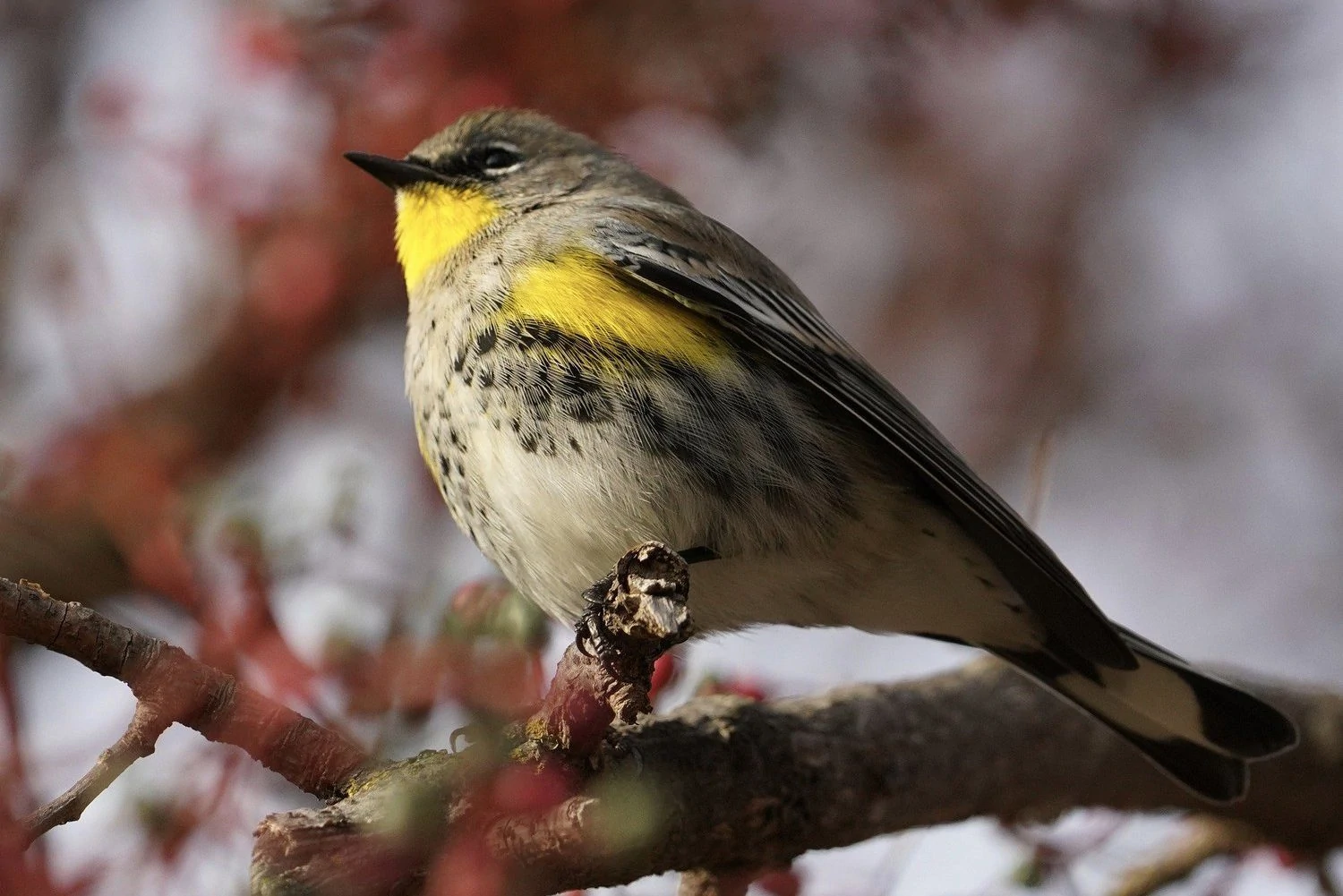
Yellow-rumped Warblers are more frequently spotted in Nevada during winter, but some also spend the breeding season in the north of the state. They are recorded in 11% of summer checklists and 28% of winter checklists submitted by bird watchers for the state.
Yellow-rumped Warblers are gray with flashes of yellow on the face, sides, and rump and white in the wings.
Females may be slightly brown, and winter birds are paler brown with bright yellow rumps and sides turning bright yellow and gray again in spring.
- Setophaga coronata
- Length: 4.7-5.5 in (12-14 cm)
- Weight: 0.4-0.5 oz (12-13 g)
- Wingspan: 7.5-9.1 in (19-23 cm)
Yellow-rumped Warblers breed predominantly in Canada and parts of the Rockies and the Appalachian mountains.
They can be seen in the Midwest during migration before overwintering in southern and southwestern US states and the Pacific Coast, and into Mexico and Central America.
You can find Yellow-rumped Warblers in coniferous forests, especially during the breeding season. During winter, they can be found in open areas with fruiting shrubs. In summer, they eat mostly insects and on migration, and in winter, they eat mostly fruit, including bayberry and wax myrtle.
Yellow-rumped Warbler Song:
Nests of Yellow-rumped Warblers are made by females in conifer trees from twigs, pine needles, and grass and lined with soft grass, moss, and hair. They lay up to six eggs which take around two weeks to hatch and a further two weeks to leave the nest.
Attract Yellow-rumped Warblers to your backyard with sunflower seeds, suet, raisins, and peanut butter.
Fun Fact: Yellow-rumped Warblers form flocks numbering thousands in the winter, and they can be aggressive to any other species getting too close.
2. Lesser Goldfinch
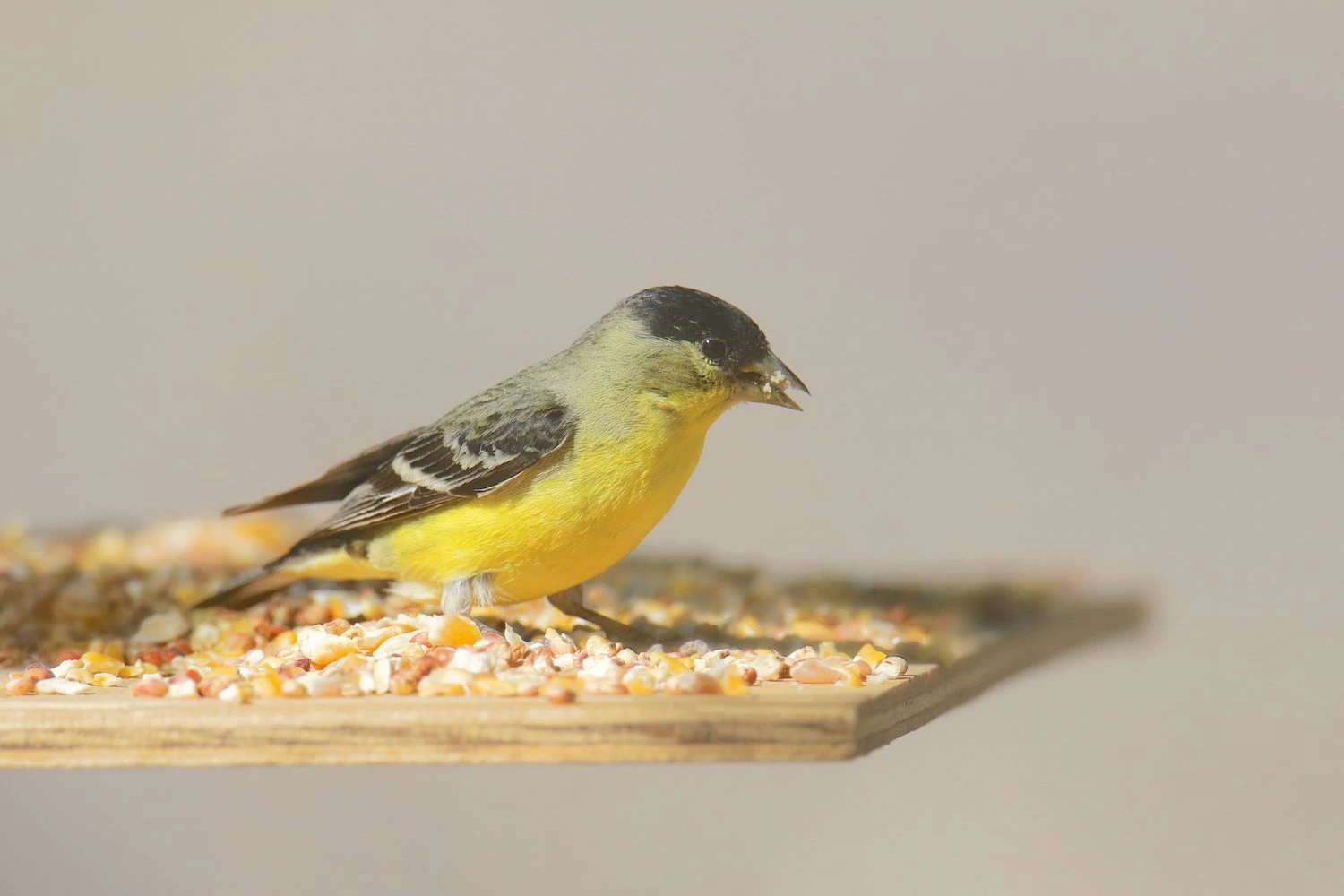
Lesser Goldfinches can be spotted in Nevada all year and are recorded in 14% of summer checklists and 18% of winter checklists for the state.
Lesser Goldfinches are tiny bright yellow and black songbirds with long pointed wings and short notched tails. Females have olive backs and are more dull yellow underneath.
- Spinus psaltria
- Length: 3.5-4.3 in (9-11 cm)
- Weight: 0.3-0.4 oz (8-11.5 g)
- Wingspan: 5.9-7.9 in (15-20 cm)
Lesser Goldfinches live in the southwestern US states and the West Coast all year, but those that breed in the interior of western US states migrate for winter.
You can find Lesser Goldfinch in large flocks in open habitats, including thickets, weedy fields, forest clearings, parks, and gardens. They forage for seeds, especially sunflower seeds, but also fruits from elderberry, coffeeberry, and buds from cottonwoods, willows, sycamores, and alders.
Lesser Goldfinch call/Song:
Nests of Lesser Goldfinches are usually near streams, hidden in trees and shrubs, and made from bark, leaves, and other plant material held together in a cup shape by spiders’ webs. They lay up to six eggs which take around two weeks to hatch and the same for the young to leave the nest.
Attract Lesser Goldfinches to your yard with sunflower seeds and nyjer in tube feeders or platform feeders.
Fun Fact: Lesser Goldfinches’ arch rival is the bigger Lawrence’s Goldfinch, and they will chase them away from feeders and nesting areas, but they will mix with other birds.
3. Western Meadowlark
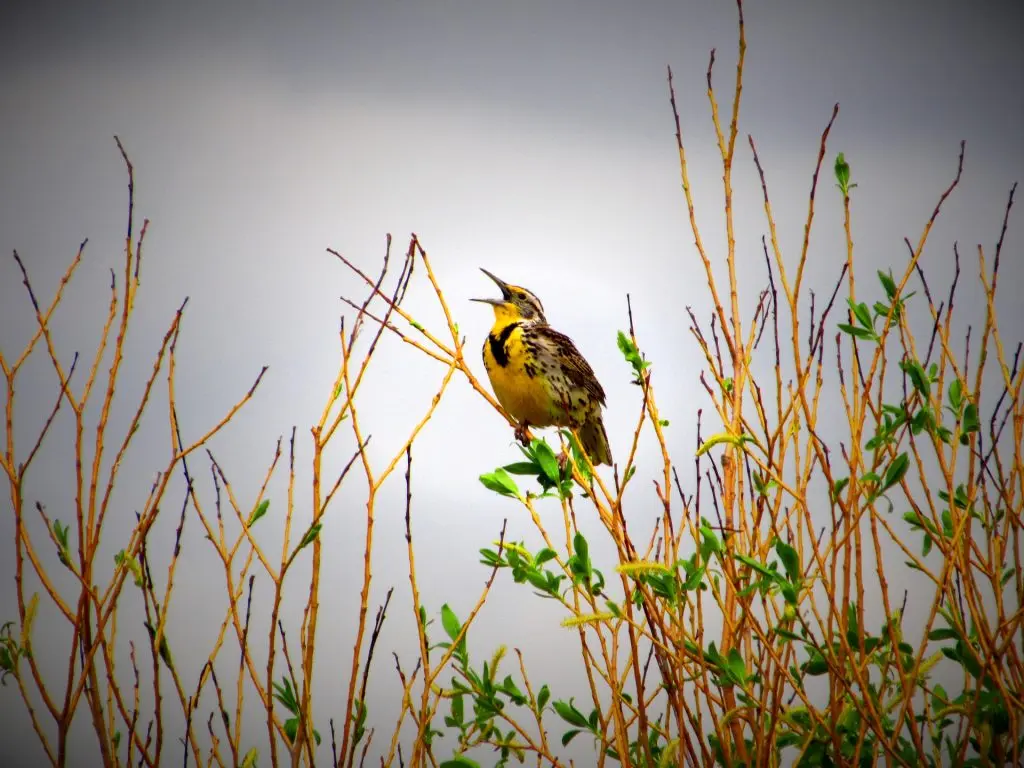
Western Meadowlarks are spotted all year in Nevada but are more common during the breeding season. They are recorded in 12% of summer checklists and 5% of winter checklists.
With their bright yellow bellies and melodious song, Western Meadowlarks can brighten up your day.
Western Meadowlarks are part of the blackbird family and are about the size of a Robin with shades of brown and white upperparts and a black V-shaped band across the bright yellow chest that turns gray in winter.
- Sturnella neglecta
- Length: 6.3-10.2 in (16-26 cm)
- Weight: 3.1-4.1 oz (89-115 g)
- Wingspan: 16.1 in (41 cm)
Western Meadowlarks that breed in northern US states and Canada migrate to more southern states in winter. However, those in the west and midwest remain all year.
You can find Western Meadowlarks usually on the ground in grasslands, meadows, and fields. They forage for food alone or in small flocks and are not usually found in woods or dense shrubby vegetation.
Western Meadowlarks’ diet consists of insects and seeds. They eat more insects n summer and more seeds and grain in winter.
Western Meadowlark sounds: They make a pleasant series of tweets, warbles, and whistles.
Check out the video below to hear the beautiful whistles and warbles of this songbird.
Nests of Western Meadowlarks are in depressions in the ground in grasslands. This is filled with soft material such as grass and may have a roof over the top, also made from grass and plant stalks.
Attract Western Meadowlarks to your backyard with sunflower seeds and cracked corn.
Fun fact: Western Meadowlarks have been chosen as the state bird for 6 US states.
4. Western Kingbird
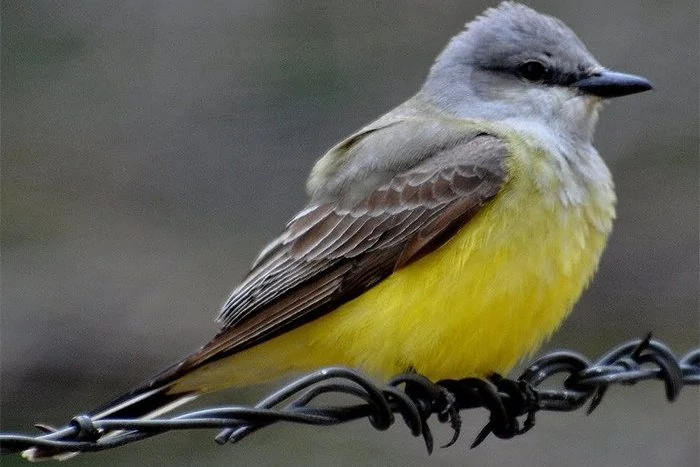
Western Kingbirds are the most frequently spotted yellow birds in Nevada during summer and are recorded in 17% of checklists at this time. They are seen here from March to October.
Western Kingbirds are large flycatchers with yellow bellies, whitish chests, gray heads, grayish-brown wings, and black tails with white edges.
- Tyrannus verticalis
- Length: 7.9-9.4 in (20-24 cm)
- Weight: 1.3-1.6 oz (37-46 g)
- Wingspan: 15.0-16.1 in (38-41 cm)
Western Kingbirds breed in summer in western US states, the plains area, and into Canada. They migrate to Mexico and Central America, but some may overwinter in the south of Florida.
You can find Western Kingbirds in open habitats, and they are often found perched on fences and utility lines, waiting for insects to fly by before catching them in mid-flight.
Western Kingbird call:
Nests of Western Kingbirds are usually built in trees or shrubs, but they also nest in human-made buildings or posts. The nest is made by the female from twigs, grass, and plant material woven into a cup.
They lay up to seven eggs which take two or nearly three weeks to hatch, and the same again for the young to leave the nest.
Attract Western Kingbirds to your yard by making it insect-friendly and planting elderberry or hawthorn, from which they will also eat the fruit.
Fun Fact: Western Kingbird parents will feed their young for a further three weeks after they leave the nest.
5. Yellow Warbler
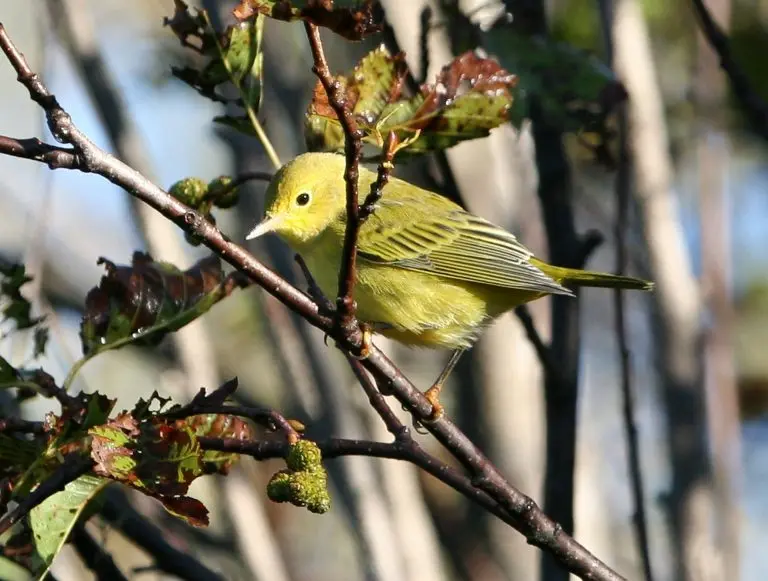
Yellow Warblers are mainly spotted in Nevada from April to October and occur in up to 15% of summer checklists for the state.
Yellow Warblers are small bright yellow birds with a yellow-green back, and the males have chestnut streaks on the breast. Females and juveniles are not as bright as males.
- Setophaga petechia
- Length: 4.7-5.1 in (12-13 cm)
- Weight: 0.3-0.4 oz (9-11 g)
- Wingspan: 6.3-7.9 in (16-20 cm)
Yellow Warblers migrate a long distance to breed in Canada and the US, except for southeastern states, before heading back into Central and South America for winter. However, they can be seen during migration in southeastern US states.
You can find Yellow Warblers along streams and wetlands in thickets and along the edges of fields foraging for insects, including caterpillars, midges, beetles, bugs, and wasps.
Yellow Warbler Song:
Nests of Yellow Warblers are in small trees or shrubs and made from bark, grass, and plant material woven together and secured with spiders webs to form a cup. It is then lined with softer material such as hair, feathers, and plant down.
They lay up to seven eggs which take around twelve days to hatch and a further ten days for the young to leave the nest.
Attract Yellow Warblers to your backyard with suet, oranges, peanut butter, and plants with berries. Also, plant native plants that attract insects without pesticides or being too tidy! Also, try birdbaths with fountains near secluded planting to provide protection.
Fun Fact: Cowbirds often lay their eggs in Yellow Warblers’ nests, and if detected, then the Yellow Warblers build a new nest on top of the old nest and eggs and start again – up to six times!
6. Yellow-headed Blackbird
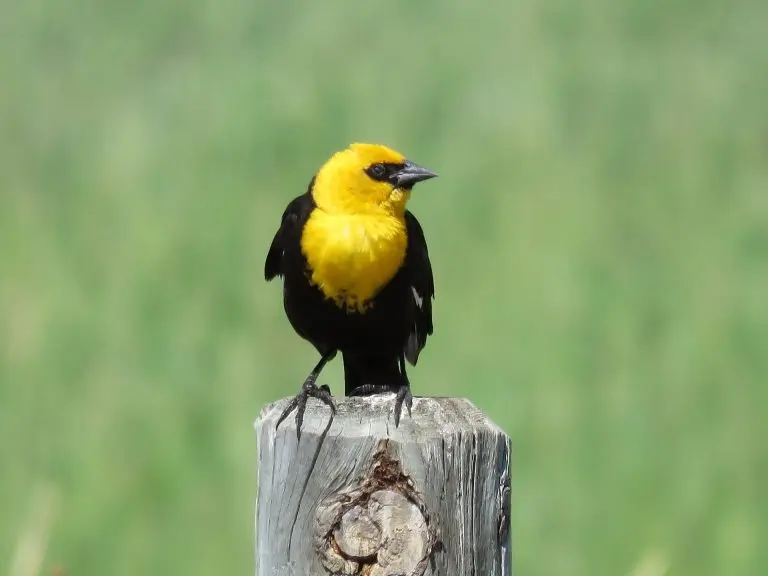
Yellow-headed Blackbirds can be spotted during summer in Nevada, but their numbers increase during spring and fall migration. They occur in 10% of summer checklists and up to 15% of checklists during migrations.
Yellow-headed Blackbirds are striking birds with glossy black bodies, bright yellow heads and chests, and white patches on the wings in males. Females are brown instead of black, and the yellow head is duller. They are larger than the Red-winged Blackbird.
- Xanthocephalus xanthocephalus
- Length: 8.3-10.2 in (21-26 cm)
- Weight: 1.6-3.5 oz (44-100 g)
- Wingspan: 16.5-17.3 in (42-44 cm)
Yellow-headed Blackbirds breed in western and prairie wetlands and nest in the reeds. They forage over surrounding wetlands, grasslands, and fields, mostly for insects in the summer.
After breeding, Yellow-headed Blackbirds migrate to fields and farmland in Southwest states and Mexico for the winter in large flocks.
Yellow-headed Blackbirds feed on insects in summer and seeds and grains in winter.
Yellow-headed Blackbirds sounds: The screeching buzz at the end of a few more musical notes is very distinctive.
Nests of Yellow-headed Blackbirds are made from long wet stems weaved together and attached to cattails or reeds over the water. They lay 2 – 5 eggs taking about two weeks to hatch and another week or two before fledging.
Attract Yellow-headed Blackbirds to your yard with sunflower seeds.
Fun fact: Yellow-headed Blackbirds hunt for insects by flipping over stones to flush them out.
7. Orange-crowned Warbler
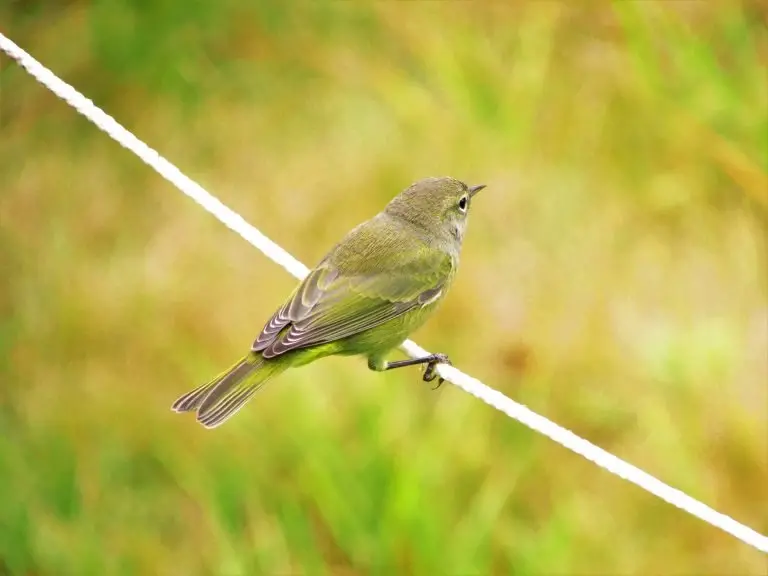
Orange-crowned Warblers are spotted during the breeding season in northern Nevada, and their numbers increase during the fall migration.
However, some also stay during winter. They are recorded in 2% of summer checklists, 6% of winter checklists, and up to 31% of checklists during fall migration.
Orange-crowned Warblers are not as brightly colored as other warblers with their yellow-olive coloring, which is more yellow on the Pacific Coast. Their orange crown is rarely seen.
- Leiothlypis celata
- Length: 4.3-5.5 in (11-14 cm)
- Weight: 0.3-0.4 oz (7-11 g)
- Wingspan: 7.5 in (19 cm)
Orange-crowned Warblers breed in Canada and western US states before migrating to the Pacific, East and Gulf Coasts, and Mexico. They can also be seen during migration in all US states, except the northeastern.
You can find Orange-crowned Warblers in shrubs and low vegetation, but they breed in open woodland. Their diet consists mainly of spiders and insects such as caterpillars and flies. They will also eat fruit, berries, and seeds and regularly visit backyard feeders.
Orange-crowned Warbler Song:
Nests of Orange-crowned Warblers are near to or on the ground and made from dead leaves, twigs, and stems and then lined with soft grass and animal hair. They lay up to six eggs.
Attract Orange-crowned Warblers to your yard with suet and peanut butter or hummingbird feeders filled with sugar water nectar.
Fun Fact: Orange-crowned Warblers will drink from the sapwells of sapsuckers and woodpeckers.
8. Western Tanager
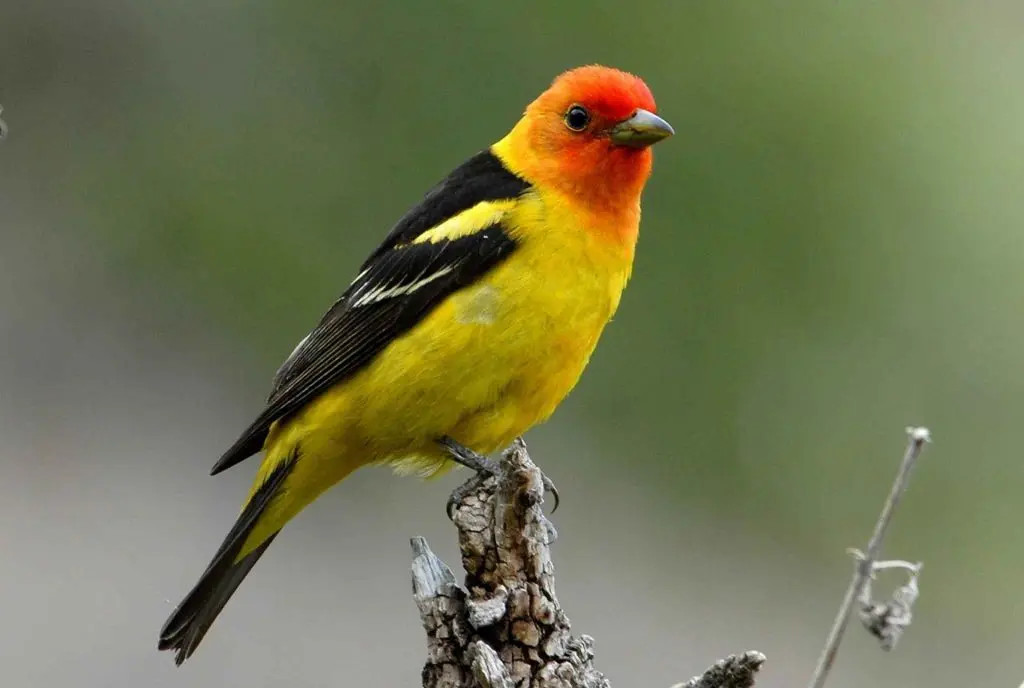
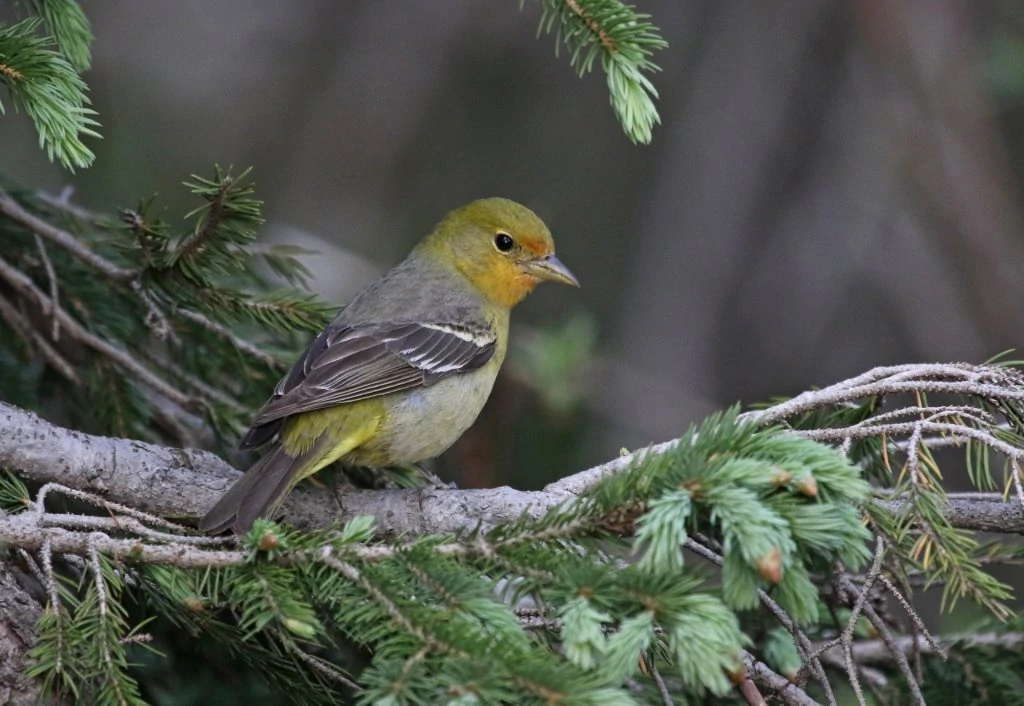
Western Tanagers are spotted in Nevada during the breeding season, but their numbers increase during the migration in May and September. They are recorded in 12% of summer checklists and up to 21% of checklists during migration.
Western Tanagers have a flaming orange-red head, yellow body, and black wings. Females have only red faces, and their bodies are yellow-green.
- Piranga ludoviciana
- Length: 6.3-7.5 in (16-19 cm)
- Weight: 0.8-1.3 oz (24-36 g)
Western Tanagers breed in western US states and western Canada. They can be seen during migration in the east and south of this range. Winter is spent in Mexico and Central America.
You can find Western Tanagers in open conifer forests, but they stay hidden in the canopy, despite their bright coloring. Their numbers are actually increasing in the last forty years.
They eat mainly insects in summer, such as wasps and grasshoppers, and in the fall and winter, they also eat fruit.
Western Tanager Song:
Nests of Western Tanagers are built by females in open areas of trees and are made from large twigs and then roots and smaller twigs to weave them into a sturdy cup shape. The nest is lined with soft grass, pine needles, hair, and other plant materials. They lay around four eggs which take around two weeks to hatch.
Attract Western Tanagers with dried fruit, cut oranges, and other fruits from bird feeders.
Fun fact: Western Tanagers’ red coloring probably comes from eating insects that produce a pigment that they cannot produce themselves.
9. Common Yellowthroat
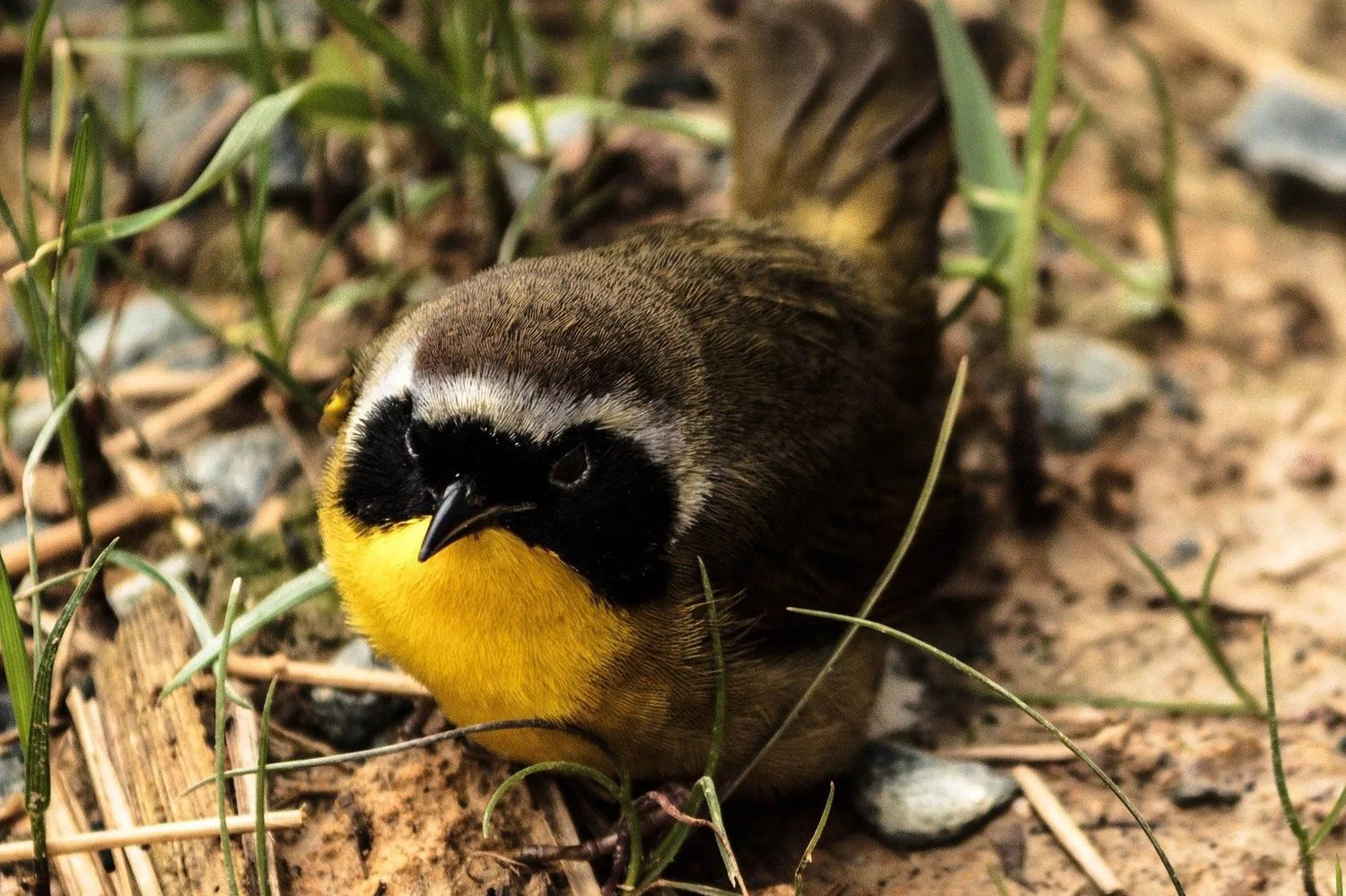
Although some can be seen here all year, Common Yellowthroats are more often spotted in Nevada from March to November and appear in 6% of summer checklists.
Common Yellowthroats are small songbirds that are brownish on the back and bright yellow underneath, with long tails. The males have black masks across their faces. The brightness of the yellow can vary geographically, and they may be more olive in parts underneath.
- Geothlypis trichas
- Length: 4.3-5.1 in (11-13 cm)
- Weight: 0.3-0.3 oz (9-10 g)
- Wingspan: 5.9-7.5 in (15-19 cm)
Common Yellowthroats spend the summer breeding over most of North America, except Alaska and northern Canada. Some remain all year along the Gulf Coast and Pacific Southwest. Then, they migrate south for winter.
You can find Common Yellowthroats often in marshy or wetland areas and brushy fields living in thick, tangled vegetation.
Common Yellowthroat Song:
Nests of Common Yellowthroats are built by females near the ground in marshy areas and supported by reeds. The nest is made from grass and sedges supported on a platform of leaves and grass. They lay up to six eggs which take around twelve days to hatch and the same for the young to leave the nest.
Attract Common Yellowthroats to large backyards with dense vegetation and native plants to attract insects.
Fun Fact: The black mask of Common Yellowthroats is a sign to courting males that that bird is male, and they attack when fake birds are used, but they do not attack when the bird has no mask.
10. Wilson’s Warbler
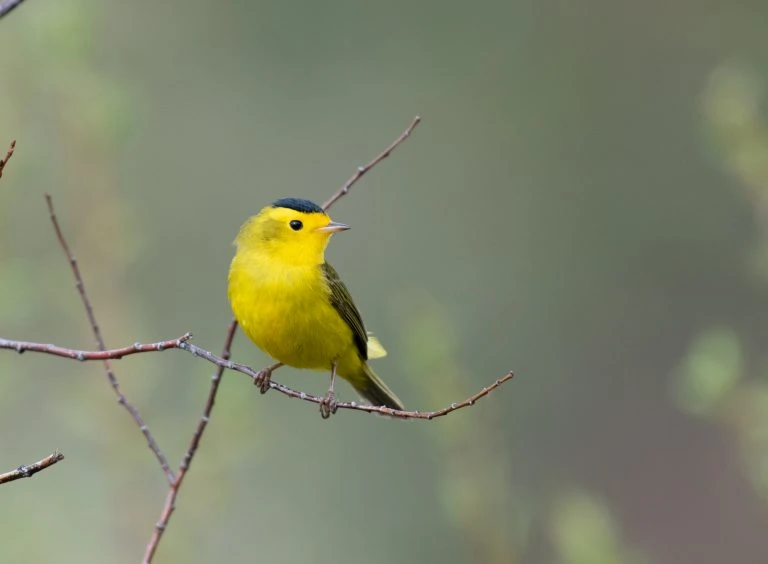
Wilson’s Warblers spend the breeding season in Nevada, and their numbers increase during migration in May and September. They occur in 8% of summer checklists and up to 21% of checklists during migration.
Wilson’s Warblers are tiny round yellow warblers with a large black cap in the males and a smaller black cap in females.
- Cardellina pusilla
- Length: 3.9-4.7 in (10-12 cm)
- Weight: 0.2-0.3 oz (5-10 g)
- Wingspan: 5.5-6.7 in (14-17 cm)
Wilson’s Warblers breed in Canada, Alaska, and northwestern US states but can also be seen across all US states during migration. They winter in Mexico and Central America.
You can find Wilson’s Warblers along streams in thickets and near forest edges foraging for insects and their larvae and spiders.
Wilson’s Warblers song:
Nests of Wilson’s Warblers are well hidden on the ground near trees or shrubs and made from leaves and sedges for the base. Grass, bark, moss, and plant material are woven into a cup shape and lined with soft grass and animal hair. They lay around five eggs which take about eleven days to hatch and an additional ten days for the young to leave the nest.
Attract Wilson’s Warblers to your backyard with native trees and shrubs, but they do not visit feeders.
Fun Fact: Wilson’s Warblers distract potential nest predators by pretending to have a broken wing and drawing the predator away before flying off.
11. American Goldfinch
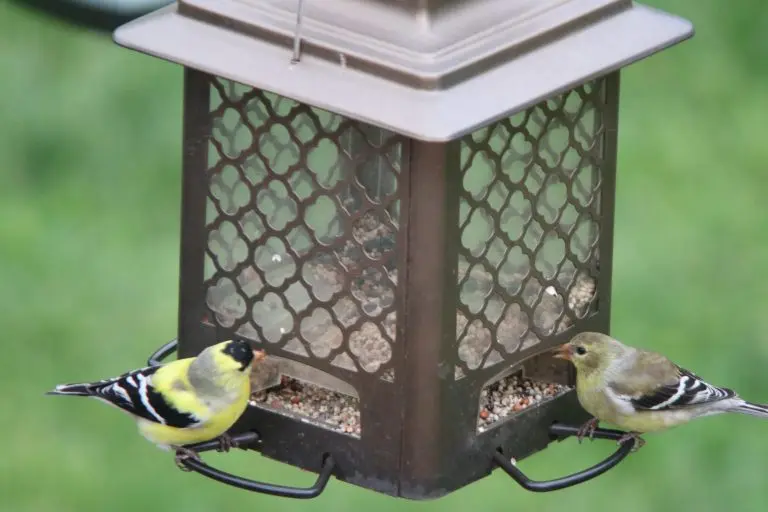
American Goldfinches spend all year in northern Nevada but are more common in winter. However, some are also seen during migration in the south. They are recorded in 1% of summer checklists and 7% of winter checklists.
American Goldfinches are popular birds, especially due to the males’ bright yellow and black coloring in spring. The females are duller brown, as are males in winter.
- Spinus tristis
- Length: 4.3-5.1 in (11-13 cm)
- Weight: 0.4-0.7 oz (11-20 g)
- Wingspan: 7.5-8.7 in (19-22 cm)
American Goldfinches can be found in most of North America and are usually resident all year. However, those that breed in Canada and the Midwest migrate to southern US States for winter.
You can find American Goldfinches in weedy fields and overgrown areas foraging for sunflower, thistle, and aster plants. They are also common in suburbs, parks, and backyards.
American Goldfinch Song:
Nests of American Goldfinches are usually in shrubs and are made from rootlets and plant material woven together and held firm to the branch with spiders’ webs. They lay up to seven eggs which take up to two weeks to hatch and two or two and a half weeks for the young to leave the nest.
Attract American Goldfinches to your backyard by planting thistles and milkweed. They will visit most bird feeders and prefer sunflower seed and nyjer seed.
Fun Fact: Cowbirds have no luck in getting the American Goldfinch to raise their young as their solely vegetarian diet is no good for cowbird chicks, and they die within a few days.
12. Cedar Waxwing
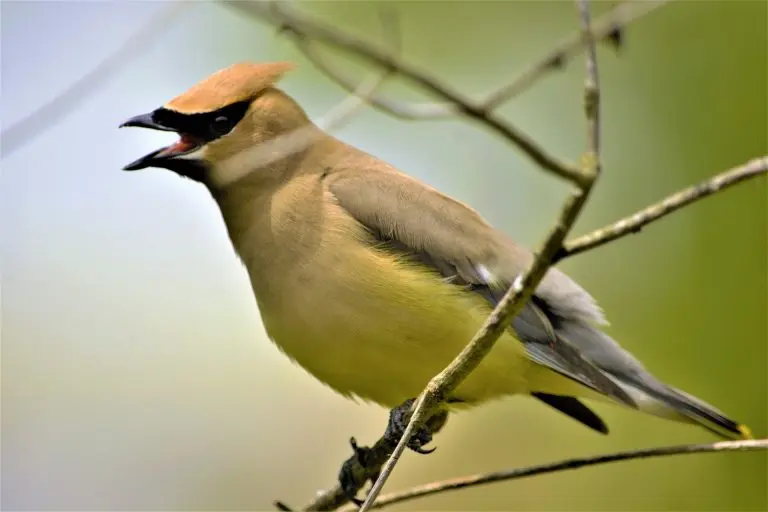
Cedar Waxwings are spotted in northern Nevada during the breeding season, but they can be spotted across the rest of the state during migration, and some even stay in winter.
Cedar Waxwings are elegant social birds that are pale brown on the head, chest, and crest, which fades to gray on the back and wings, and tail. Their belly is pale yellow, and there is bright yellow on the tip. They have a narrow black mask over their eyes and bright red on the wingtips.
- Bombycilla cedrorum
- Length: 5.5-6.7 in (14-17 cm)
- Weight: 1.1 oz (32 g)
- Wingspan: 8.7-11.8 in (22-30 cm)
Cedar Waxwings breed in Canada before heading to the southern US, Mexico, and Central America for winter. They are resident all year in northern US states.
You can find Cedar Waxwings in berry bushes, woodlands, grassland, in towns, and along streams. They feed mainly on fruit but also eat insects in summer.
Cedar Waxwing Call:
Nests of Cedar Waxwing are in trees from twigs, grass, hair, and plant material and lined with pine needles and soft grass. They lay up to six eggs which take around twelve days to hatch and a further sixteen or so days for the young to leave the nest.
Attract Cedar Waxwings to your backyard try planting native trees and shrubs that have small fruit, such as serviceberry, dogwood, juniper, winterberry, and hawthorn. You can also try fruit on platform feeders.
Fun Fact: Cedar Waxwings give gifts when courting a potential mate, which they pass between them.
13. Hooded Oriole
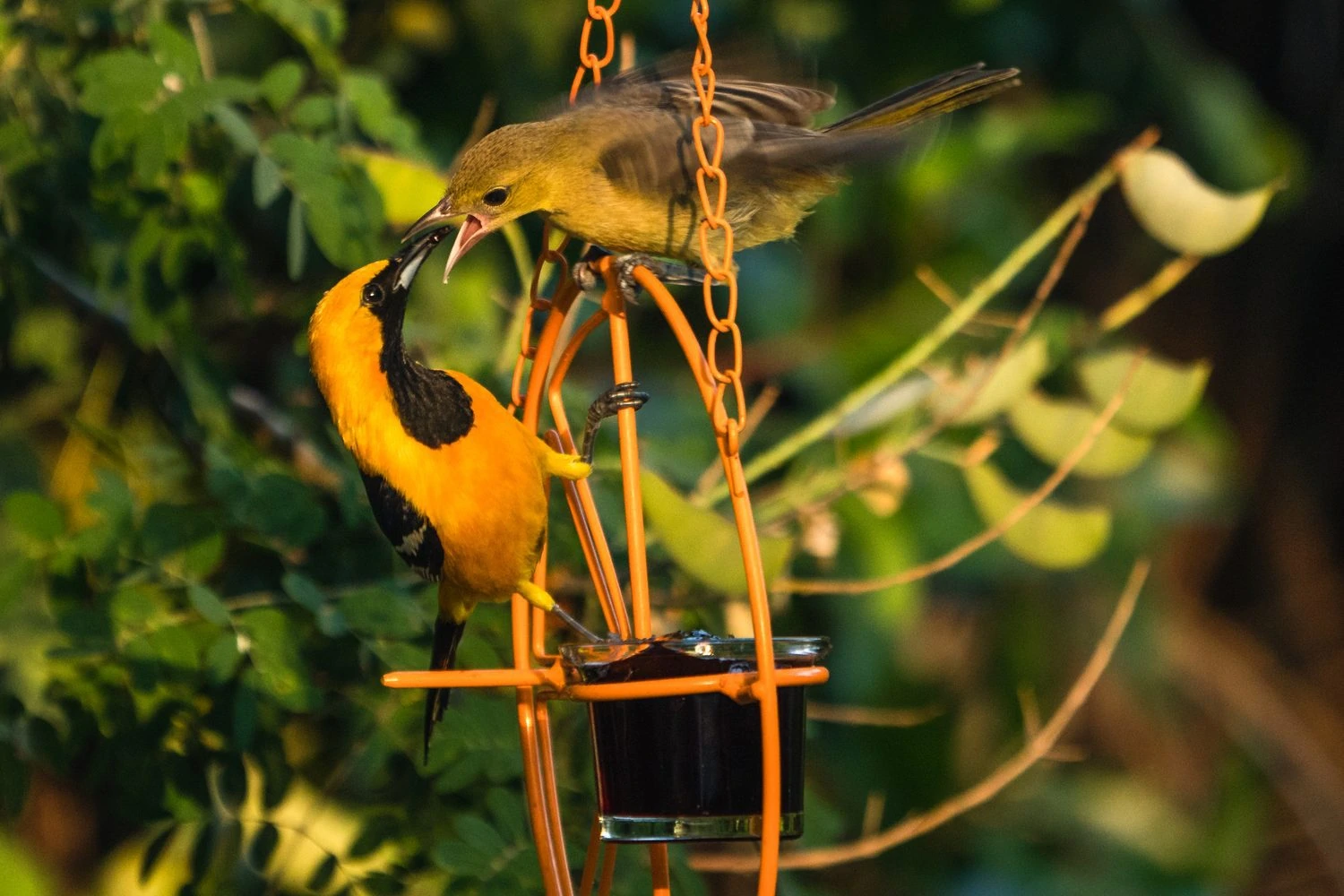
Hooded Orioles spend the breeding season in Nevada and can be spotted from March to mid-October. They appear in 1% of summer checklists.
Male Hooded Orioles range from bright yellow to bright orange, with black throats and backs. Females and immatures are more yellow with grayish wings. Females also lack the black face markings that males have.
- Icterus cucullatus
- Length: 7.1-7.9 in (18-20 cm)
- Weight: 0.8 oz (24 g)
- Wingspan: 9.1-11.0 in (23-28 cm)
Hooded Orioles breed in the southern US states, making hanging nests on the undersides of palm fronds. They winter in Mexico, and some remain all year on the Gulf Coast of Mexico and Central America.
Some Hooded Orioles have stopped migrating from southern US states because of the ready food supply from nectar feeders and fruit left out by birdwatchers. They live in dry open areas, especially near palm trees.
Hooded Oriole sounds: The males’ song is a jumbled mix of whistles and warbles. Females’ songs are less complex, and they both have sharp calls.
Nests of Hooded Orioles are high at around 20 feet off the ground and are hanging baskets weaved from grass and plant material.
Attract Hooded Orioles to your backyard with sugar water, jelly, and oranges.
Fun fact: Hooded Oriole males in Texas tend to be orange in color, but those further west are yellow.
14. Nashville Warbler
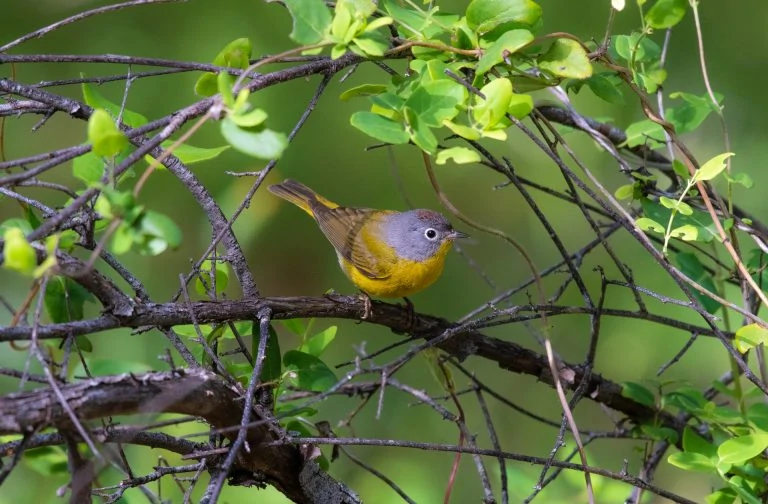
Nashville Warblers can be spotted in Nevada during summer from April until October, but they are most common during the fall migration and occur in 6% of checklists at this time.
Nashville Warblers are mostly yellow underneath but with white lower bellies. They have a greenish yellow back and gray head with a white eyering. Females and juveniles are less bright than males.
- Leiothlypis ruficapilla
- Length: 4.3-5.1 in (11-13 cm)
- Weight: 0.2-0.5 oz (6.7-13.9 g)
- Wingspan: 6.7-7.9 in (17-20 cm)
Nashville Warblers breed in northeastern US states and Canada, and there is a smaller population in northwestern US states and into British Columbia. They can also be seen during migration in most US states. They spend the winter mainly in Mexico.
You can find Nashville Warblers in scrubby habitats and low deciduous forests hunting for insects.
Nashville Warbler song:
Nests of Nashville Warblers are hidden in shrubs close to the ground. The nest is built from bark, grass, and moss woven into a cup lined with softer material. They lay around four eggs which take about twelve days to hatch and ten days for the young to leave the nest.
Attract Nashville Warblers to your backyard in winter in southern US states with suet.
Fun Fact: Nashville Warbles migrate along the Atlantic Coast in their first year but only migrate inland after that.
15. Summer Tanager Female
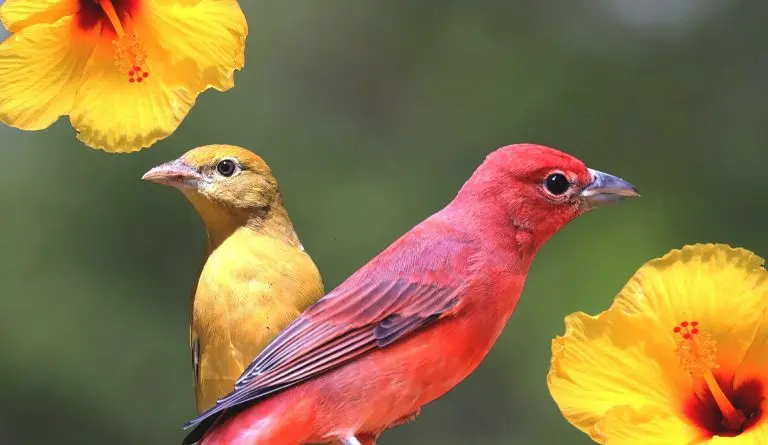
Summer Tanagers are spotted in Nevada, mainly in the south of the state, from April to mid-November.
Summer Tanager males are bright red birds with large chunky beaks. Females and juveniles are mainly yellow with hints of green on their backs.
- Piranga rubra
- Length: 6.7 in (17 cm)
- Weight: 1.1 oz (30 g)
Summer Tanagers breed in southern and eastern states before heading to Central and South America for winter.
You can find Summer Tanagers in open woodlands, and they feed on bees and wasps in mid-flight. They catch them and kill them by beating them against a branch and rubbing the stinger off before eating them.
Summer Tanager Song:
Nests of Summer Tanagers are made by the females from grass and other plant material towards the end of overhanging branches. The nest is not very well constructed, but they hold around four eggs. The eggs hatch in about ten days, and the young take another ten days to leave the nest.
Attract Summer Tanagers to your backyard with berry bushes and fruit trees.
Fun fact: Young Scarlet Tanagers are fed by their parents for another three weeks after leaving the nest, as they are cannot fly very well for a few more weeks.
16. Scott’s Oriole
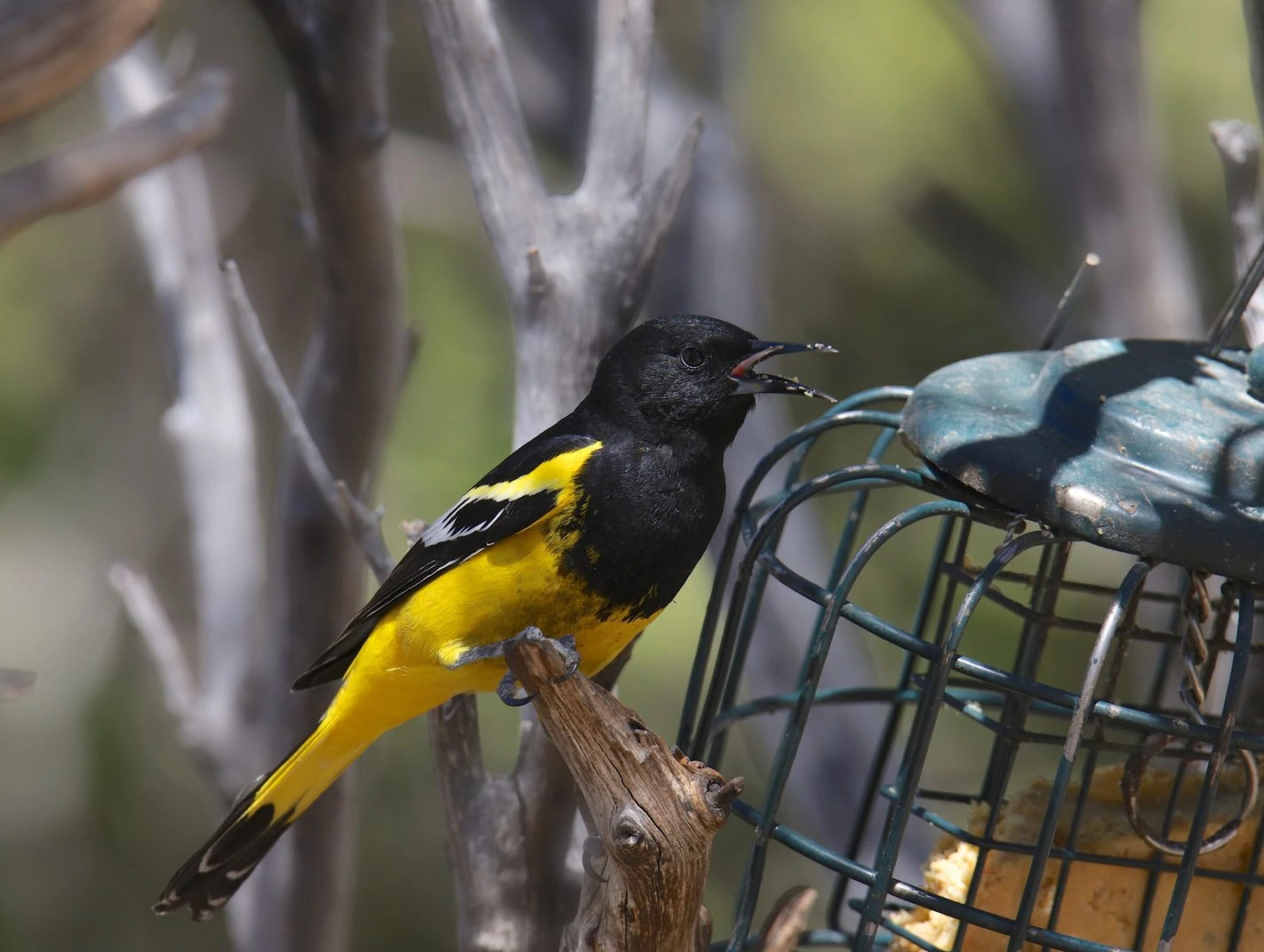
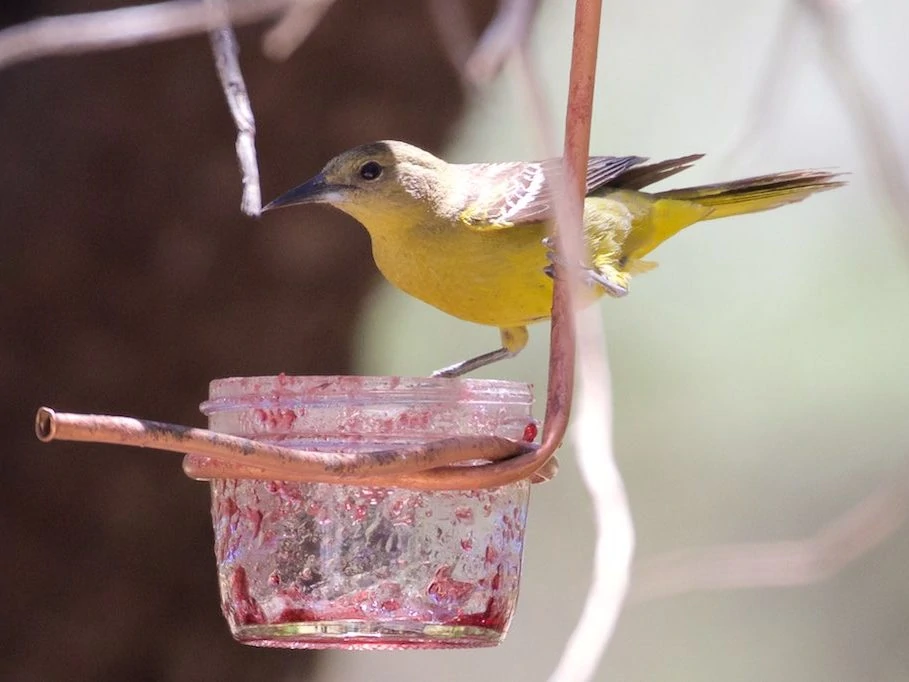
Scott’s Orioles are spotted in Nevada from mid-March to September.
Males are a large distinctive oriole with bright yellow undersides, black heads, black backs, and have black under the tip of their tails. Females are a paler yellow with olive-brown backs.
- Icterus parisorum
- Length: 9.1 in (23 cm)
- Weight: 1.1-1.4 oz (32-41 g)
- Wingspan: 12.6 in (32 cm)
Scott’s Orioles breed in southwestern US states and northern Mexico before migrating south for winter. They also remain all year in southern Mexico and Baja California.
You can find Scott’s Orioles on higher slopes in arid areas feeding on insects, nectar, and fruit. They are often found on yuccas and begin singing before dawn.
Scott’s Oriole sounds: Their song is a sweet series of whistles and is less jumbled than some orioles songs.
Nests of Orchard Orioles are often quite low down at only 5 – 7 feet and are a basket of cactus fibers, grass, and yucca leaf. They may have 2 or 3 broods in a year.
Attract Scott’s Orioles to your backyard with sugar water, jelly, and oranges.
Fun fact: Scott’s Orioles will feed on toxic monarch butterflies by finding the ones with the least toxins and eating those.
17. Evening Grosbeak
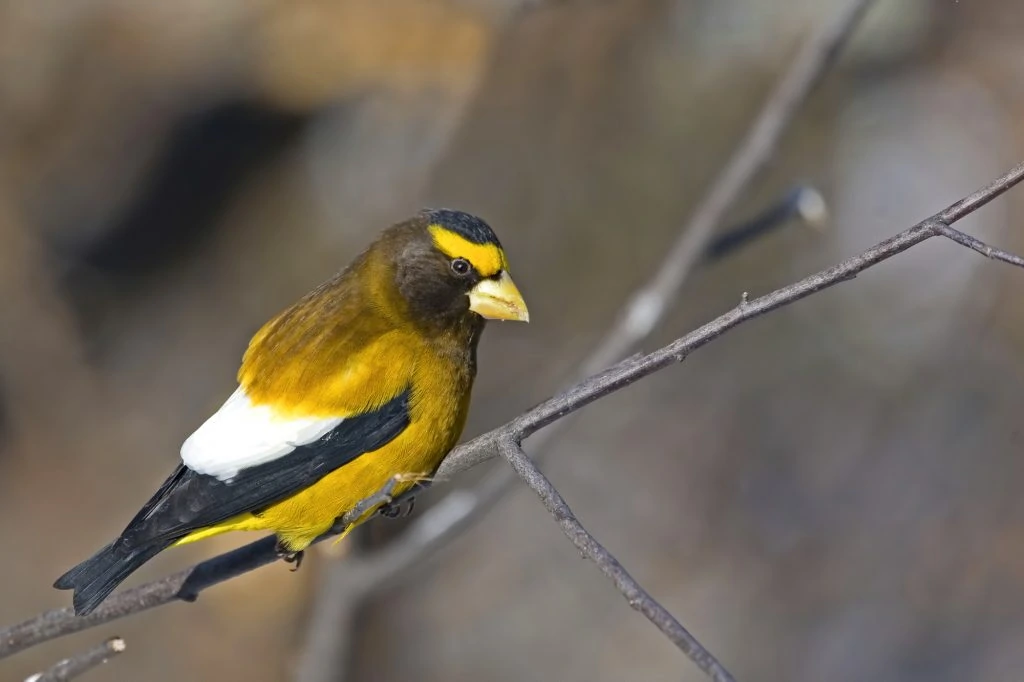
Evening Grosbeaks are vulnerable species in Nevada, but they can be spotted here mostly during migration in May and October.
Evening Grosbeaks are chunky birds with big bills and a striking yellow and black pattern. Adult males have a bright yellow stripe over their eyes, making them look fierce. Their heads are black, with gray necks, and their chest and belly are yellow. They also have a white patch on their wings.
Females and juvenile males have greenish bills, mostly gray bodies, black and white wings, and a yellow tinge to the neck.
- Hesperiphona vespertina
- Length: 16 to 22 cm (6.3 to 8.7 in)
- Weight: 38.7 to 86.1 g (1.37 to 3.04 oz)
- Wingspan: 30 to 36 cm (12 to 14 in)
Evening Grosbeaks remain all year in southern Canada and down the west coast to northern California. However, when cone crops are poor, they will migrate south to most US states.
You can find Evening Grosbeaks in forests and mountain regions. During the winter, they’re often attracted to bird feeders in backyards, most often because it’s an easy food supply.
Evening Grosbeaks naturally feed on flower buds during spring; insect larvae from treetops during the summer; and in the winter, they flock to backyard feeders or feast on seeds, berries, and small fruit.
Evening Grosbeak Song:
Nests of Evening Grosbeaks are usually found up to 100 feet above ground in pine trees. The nests are loosely made, composed of twigs, rootlets, grass, moss, and pine needles. There are usually up to five eggs laid by the female, and she incubates them for two weeks until they hatch.
Attract Evening Grosbeaks to your backyard during winter with sunflower seeds, berries, and maple buds.
Fun fact: Evening Grosbeaks have such powerful bills that they can crush seeds that are too hard to open for other smaller birds, so these birds hang around to eat whatever is left behind.
18. American Redstart Female
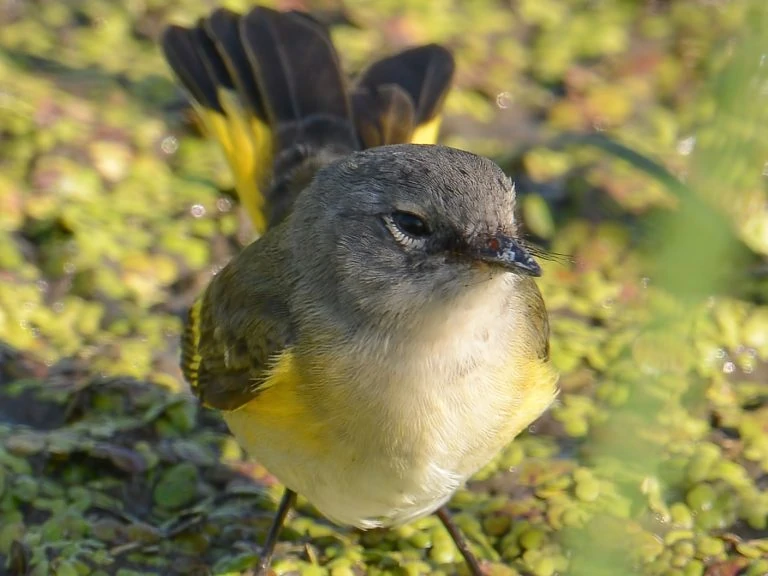
American Redstarts are not very common in Nevada, but they have been spotted migrating across the state.
Male American Redstarts are mostly black with bright orange patches and a white belly. Females are olive-gray instead of black and have lots of yellow patches.
- Setophaga ruticilla
- Length: 4.3-5.1 in (11-13 cm)
- Weight: 0.2-0.3 oz (6-9 g)
- Wingspan: 6.3-7.5 in (16-19 cm)
American Redstarts breed in eastern US states and Canada and into northwestern US states. They may also be seen during migration in central and western US states.
You can find American Redstarts in deciduous woodlands eating insects and also in backyards and thickets eating berries such as serviceberry and magnolia.
American Redstart song: Their song drops in pitch at the end.
Nests of American Redstarts are close to the trunk in trees or large shrubs and are made from bark, grass, and other plant material. They lay up to five eggs which take just under two weeks to hatch and a week or two for the young to leave the nest.
Attract American Redstarts to your backyard with berry plants such as magnolia and serviceberry.
Fun Fact: American Redstart parents only feed certain chicks each rather than feeding them all.
19. Hooded Warbler
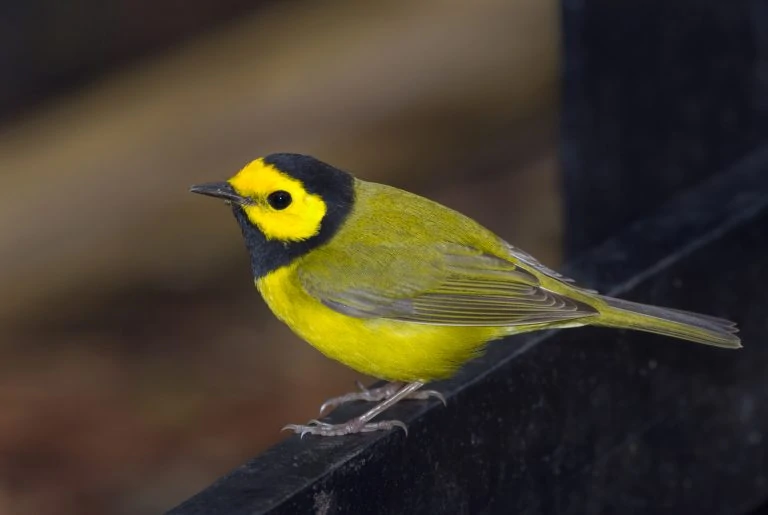
Hooded Warblers have occasionally been spotted in southern Nevada during summer, but some hang around until January.
Male Hooded Warblers have a bright yellow face with a distinctive black hood and throat. They are yellow underneath and olive-green above. They are white under their tail, which is visible when they flick their tails up.
Females and immature are more yellow and without the black face markings.
- Setophaga citrina
- Length: 5.1 in (13 cm)
- Weight: 0.3-0.4 oz (9-12 g)
- Wingspan: 6.9 in (17.5 cm)
Hooded Warblers breed in eastern US states before heading south into Central America and the Caribbean for winter.
You can find Hooded Warblers in forests with dense understories to hunt for insects and spiders.
Hooded Warbler song:
Nests of Hooded Warblers are near forests and clearings and built in shrubs from bark, grass, and plant material woven into a cup. They lay around four eggs, which take twelve days to hatch and a further nine days for the young to leave the nest.
Attract Hooded Warblers to your backyard with native shrubs and plants that attract insects and provide protection.
Fun Fact: Hooded Warblers have white spots on their tails which is thought to startle insects so they can catch them more easily.
20. Prothonotary Warbler
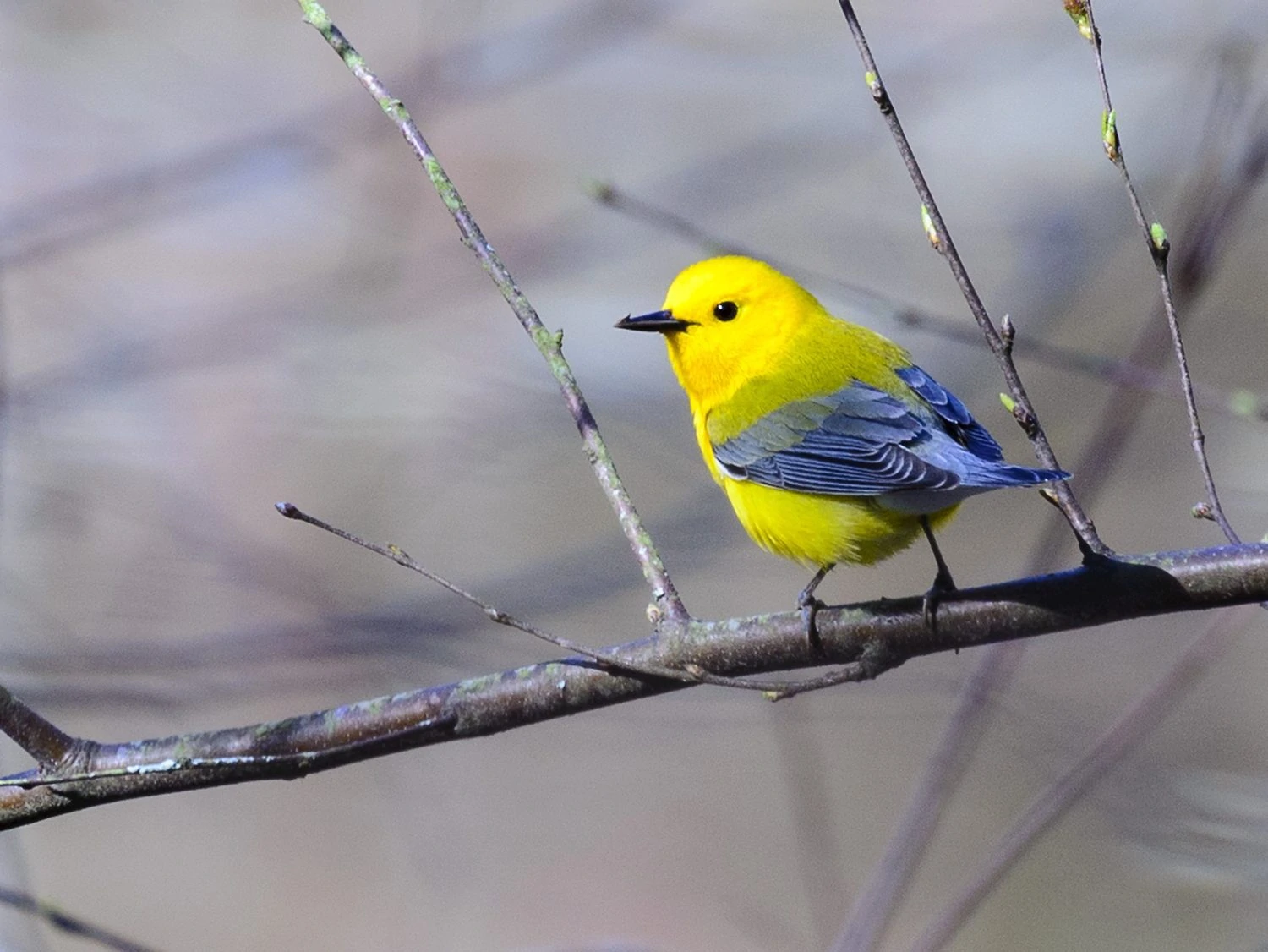
Prothonotary Warblers are not common in Nevada, but there have been some recorded sightings during migration.
Prothonotary Warblers are bright yellow with blue-gray wings and tails. They are large for Warblers and have thick black beaks, and are white under their tails. Females are less bright than males.
- Protonotaria citrea
- Length: 5.1 in (13 cm)
- Weight: 0.44 oz (12.5 g)
- Wingspan: 8.75 in (22 cm)
Prothonotary Warblers breed in eastern US states, and they spend the winter in Mexico and down to northern South America.
You can find Prothonotary Warblers near streams and wet woodlands foraging for spiders, insects, and snails. In winter, they will also eat fruit and seeds.
Prothonotary Warblers song:
Nests of Prothonotary Warblers use abandoned woodpecker nest holes in trees that are near water. Males place moss in the hole, and then the female makes a cup-shaped nest from grass and leaves, and other plant material.
They lay up to seven eggs which take about two weeks to hatch and an additional ten days for the young to leave the nest.
Attract Prothonotary Warblers to your backyard with a nest box if you live near wet areas.
Fun Fact: Prothonotaries are the bright yellow robes worn by members of the Roman Catholic church, and that is how the Prothonotary Warblers got their name.
How Frequently Yellow Birds are Spotted in Nevada in Summer and Winter
Checklists are a great resource to find out which birds are commonly spotted in your state. These lists show which yellow birds are most frequently recorded on checklists on ebird in summer and winter in Nevada.
Yellow Birds in Nevada in Summer:
Western Kingbird 17.2%
Yellow Warbler 15.5%
Lesser Goldfinch 14.1%
Western Meadowlark 12.4%
Western Tanager 12.2%
Yellow-rumped Warbler 11.9%
Yellow-headed Blackbird 10.8%
Wilson’s Warbler 8.2%
Common Yellowthroat 6.8%
Orange-crowned Warbler 2.9%
Cedar Waxwing 2.6%
Hooded Oriole 1.5%
American Goldfinch 1.4%
Scott’s Oriole 1.4%
Summer Tanager 1.2%
Evening Grosbeak 0.6%
Nashville Warbler 0.6%
American Redstart 0.2%
Hooded Warbler 0.1%
Prothonotary Warbler <0.1%
Yellow Birds in Nevada in Winter:
Yellow-rumped Warbler 28.2%
Lesser Goldfinch 18.4%
American Goldfinch 7.7%
Orange-crowned Warbler 6.1%
Western Meadowlark 5.9%
Cedar Waxwing 3.7%
Evening Grosbeak 0.4%
Common Yellowthroat 0.2%
Yellow-headed Blackbird 0.2%
Hooded Warbler 0.1%
Wilson’s Warbler 0.1%
Yellow Warbler 0.1%
Nashville Warbler <0.1%
American Redstart <0.1%
Hooded Oriole <0.1%
Scott’s Oriole <0.1%
Western Kingbird <0.1%
Summer Tanager <0.1%

